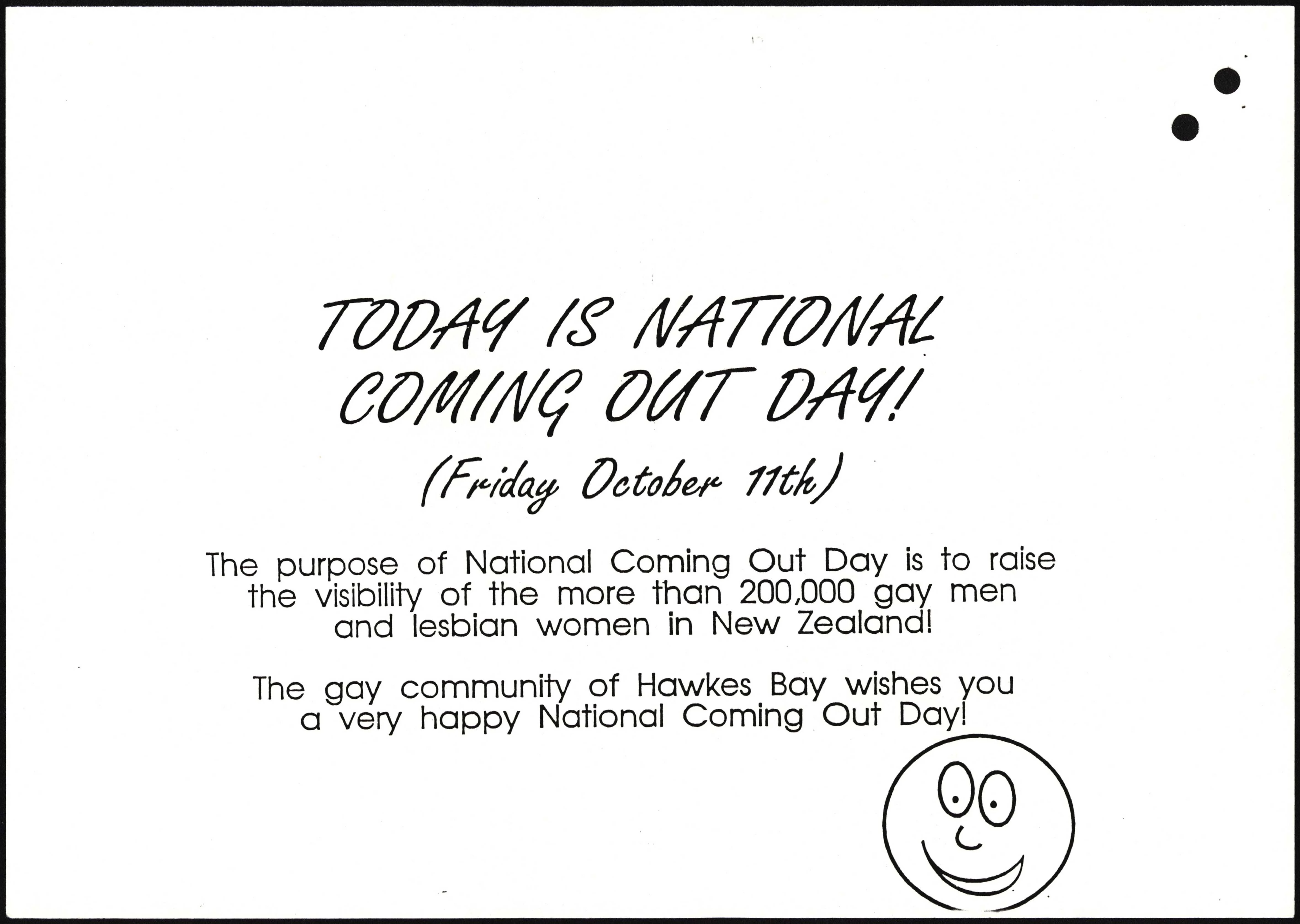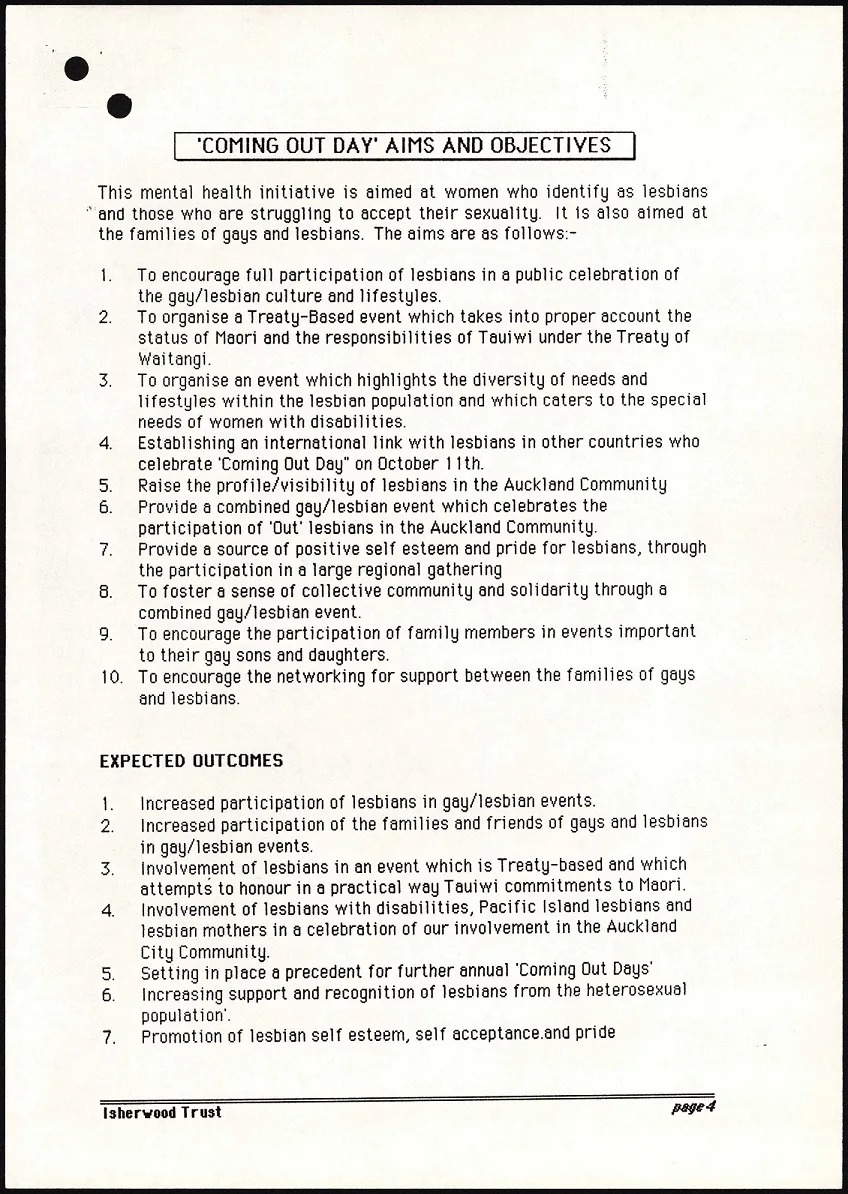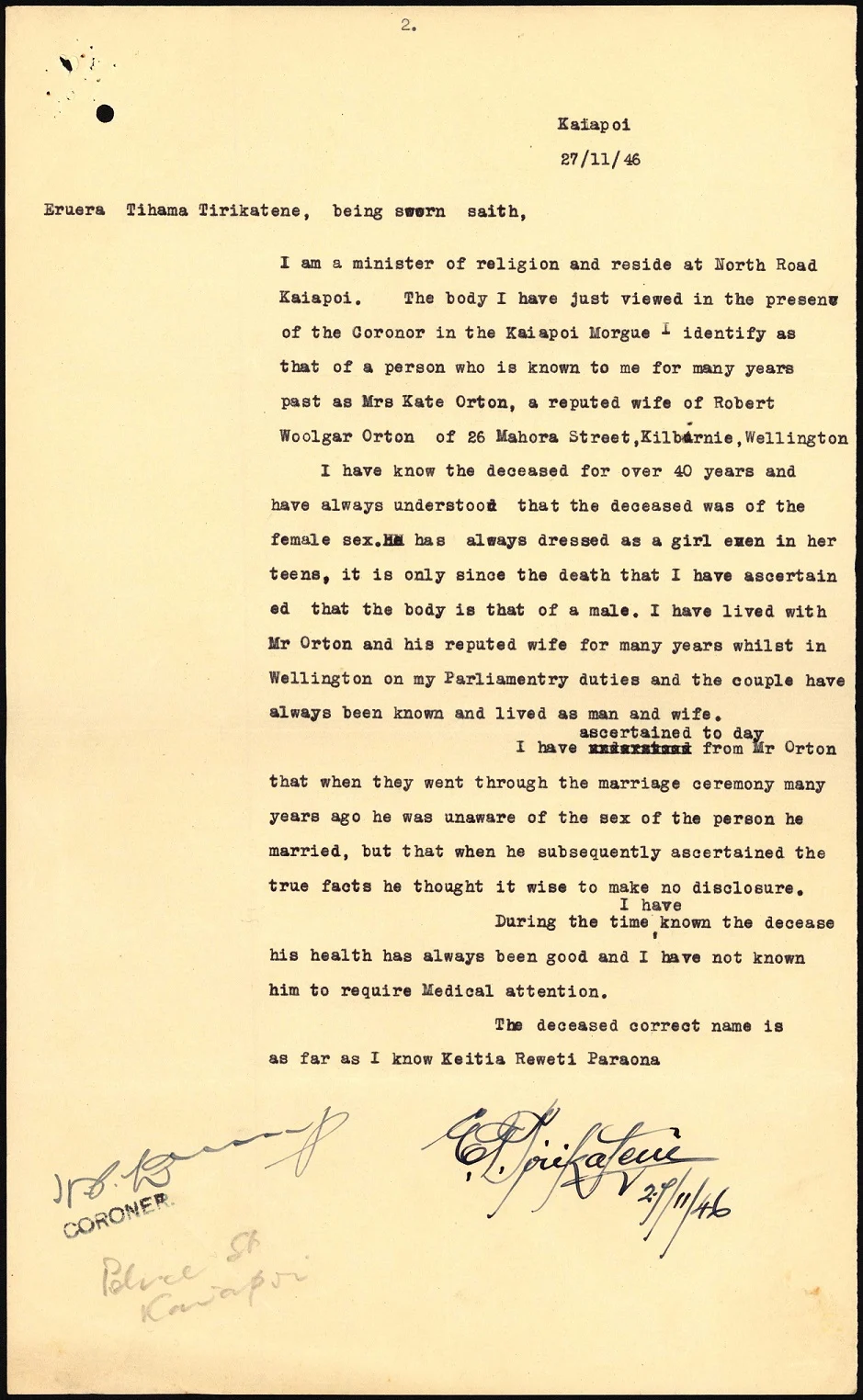Pride in the archives
In recognition of Pride events and celebrations wrapping up around the country, we'd like to highlight a selection of LGBTQIA+ records we hold that show the diversity of archives available to the public.
Unearthing these records can be a challenge as the way Aotearoa New Zealand has talked about and accepted LGBTQIA+ people has changed dramatically. By digitising some of the records that we've identified, we hope to give a glimpse into the large number of potential stories to be uncovered here at Archives NZ.
The first of these records is from the 1990s. A funding bid from the Auckland Lesbian & Gay Centre Trust (formerly the Isherwood Trust) for their efforts in the “Coming Out Day” events of 1991 and 1992. Pride events have existed in New Zealand since 1970 but interest increased in the early '90s following the creation of the Hero Parade in Auckland and the passing of the Homosexual Law Reform in 1986.
The last few years have seen much debate from both inside and outside the community about what Pride events should entail and who they are for. Looking back at a record like this, we're able to reflect on how things have changed over time, and what has remained the same. They tell us about efforts made by community groups and others to raise the profile and actively improve the LGBTQIA+ experience in New Zealand. These records can provide a window for younger generations into the legacy they are redefining and maintaining.
The sheer quantity of material available here at Archives NZ presents a challenge for both archivists and researchers. Titles and descriptions sometimes fail to reveal the story within. This is the case with the following record, which is described as “Coroners inquests - Case files - Canterbury - Paraona, Keitia Wiremu Reweti”.
The record describes the Coroner’s inquest into Keitia Paraona or Auntie Kate Orton’s death following heart failure at age 63 in 1946. The inquest followed a nurse’s discovery that while Kate presented as a woman, her body was biologically male. This record speaks to the often-secretive nature of many of these histories, and the challenges faced by many LGBTQIA+ people and their families in our past. While it is becoming increasingly accepted to be transgender or gender diverse, the 1940s were a far more rigid time. From these records we can learn that there were people living as Kate did, in secret, and in a very precarious position.
Until her death she appeared to have faced little to no suspicion. The record includes this quote from a Minister and friend: "I have known the deceased for over 40 years and have always understood that the deceased was of the female sex. [Unclear] has always dressed as a girl even in her teens, it is only since the death that I have ascertained that the body is that of a male". Records such as these help paint a picture of how diverse the experiences of LGBTQIA+ people have been in this country.
Some, like Kate, lived full lives. Friends and families either did not question them or actively protected them from the danger of wider society finding out. As her husband said in his deposition "he thought it wise to make no disclosure". We chose to highlight this record not to posthumously out her or to sensationalise her story but to acknowledge the many hidden lives that existed before broad public acceptance of people like Kate.
There are many other fascinating stories of LGBTQIA+ people and groups here in the repository at Archives NZ. We hope that by shedding light onto a few of these, researchers can uncover more stories to help to create a fuller picture of queer life in Aotearoa.


